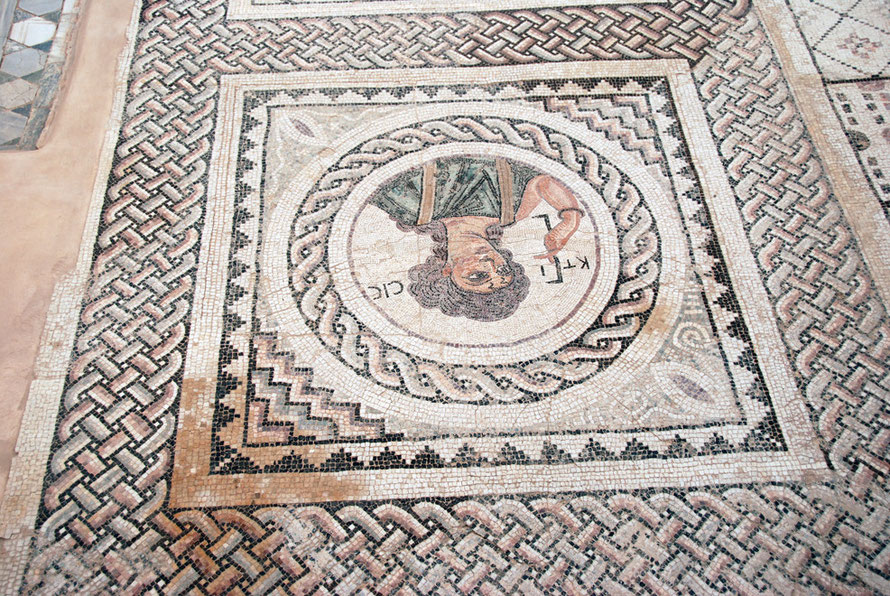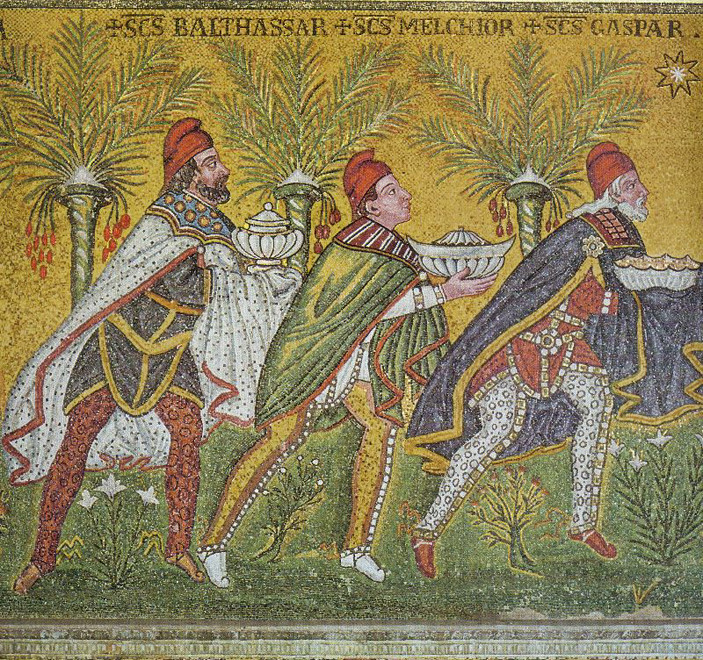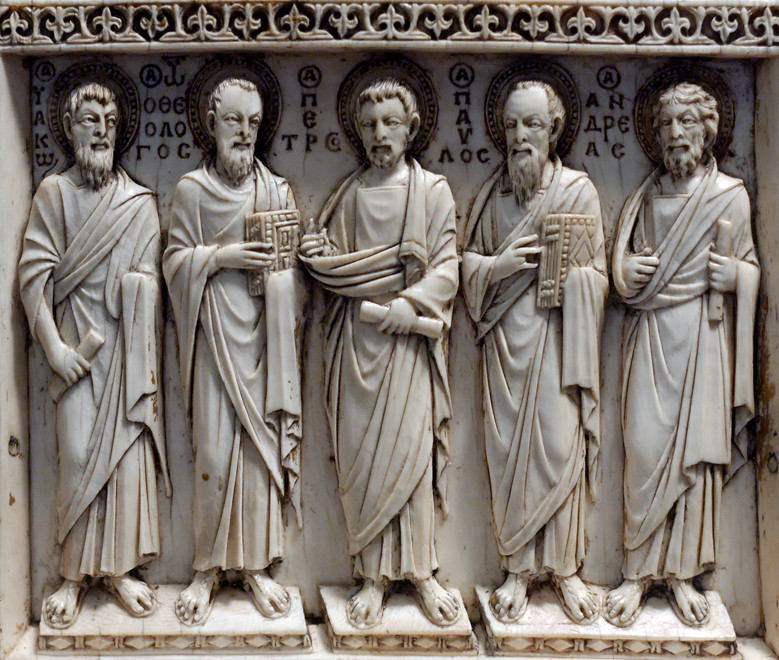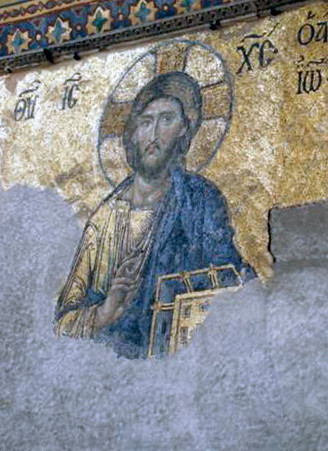V. Byzantium: An Introduction

The following section draws heavily on David Talbot Rice’s Art of the Byzantine Era (Thames and Hudson, 1963).
The Byzantine Empire and Church have historically been regarded with contempt by Western artistic and church traditions. Says Rice, ‘Sixty years ago the little that was said of Byzantine art as a whole was only to denigrate it’ (p.220). Indeed, Byzantine art was seen as crude and gaudy representation of the unsophisticated and primitive East.
The philosophers and propagandists of the Enlightenment and post-Enlightenment tied their star very firmly to the Renaissance and the line that it traced back through the Latin Church to Rome and Greece. Eastern Orthodoxy and Arab scholarship were viewed as aberrations and unfortunate excrescences that if allowed significance at all it was only so done to emphasis the manner in which they had marred and delayed the great linear narrative from Athens to London and Edinburgh.
Writing at the beginning of the 1960s Rice wanted to draw out both the intrinsic quality and development of Byzantine art over a period of ten centuries and to make clear the ways in which the development of Byzantine art and its stylistic, philosophical and emotional concerns both fed from the traditions of Classical art and fed into, and in certain ways prefigured, the flowering of the Renaissance. Indeed, he asserts that Constantinople ‘was the very hub of the civilized world from the foundation of the city as capital around 300 till its conquest by the Turks in 1453’ (p.7).

The Byzantine era and Empire start in the fourth century with two markers; the Edict of Milan where Emperor Constantine sanctioned the adoption of Christianity as the official religion off the Roman Empire; and the transfer of the capital of the Roman Empire from Rome to Byzantium – renamed Constantinople - in 330AD.
This brought the two main sources of patronage in the Roman Empire - the Court and the Church – ‘into the orbit of a new and distinct culture, in part Greek and in part Eastern’ (p.9).
A further strengthening of the importance of new eastern Roman Empire took place in the 5th century with the sack of Rome by Goths in 410AD and the disappearance of independent western rule by an Emperor in 476AD.
In terms of the emergence of a distinctive Byzantine art this was given a great fillip by the reign of Justinian (527-65), whose lavish patronage of the arts underpinned a flowering of a Byzantine art and culture at the turn of the 6th century.
The rise of Constantinople and its temporal and religious power did not go unchallenged by other great Christian centres and cities of the Near East – in particular Antioch, in Syria, and Alexandria in Egypt. They were older and more established than upstart Constantinople, with distinct cultures and artistic traditions and it was only the rise of Islam and the caliphate that weakened and then snuffed out their importance as centres of Christianity (634 and 641 respectively).

Antioch in particular was an important centre of innovation that fed an ‘Orientalizing style’ into emergent Christian motifs and compositions of bright and vibrant colours that gave rise to an expressive concern with the inner meaning of a work of art and new techniques such as the full-face pose and eastern motifs – birds, ribbons, and hom - the tree of life (pp.32-40).
However, the rule of Emperor Justinian began to change all this as the vast resources of the Byzantine Empire – that by now stretched from Italy to Mesopotamia – were used to fuel artistic development from the centre of the empire. This was manifest in the churches built in Constantinople, Ravenna, Jerusalem, Bethlehem, Mount Sinai and the Near East. This eclipsed the decay in the West and the growing might of Arab rulers in the east and it was not until the rise of Charlemagne in the 9th century that a western-based art movement began to flourish that found its full expression as the Romanesque in the eleventh century.
The great strengths of Justinian artistic expression lay in the magnificent mosaics that were created in the new churches. These combined ‘the grandeur and magnificence of classical art with a style that is new, interpretational and imaginative’ according to Rice (p.51).

There is a wonderful rhythmical flow to the compositions of the full-faced figures of saints who express individual characters and who stand in space silhouetted against plain or stylized backgrounds. The rapidity of change ushered in by the scale of Justinian’s patronage was to give rise to a ‘new iconographical system which was to receive the approval of the Church and continue with little change … until the end of Byzantine culture [in the fifteenth century with the Ottoman occupation Constantinople] (p.54).
These changes are captured in the church of Sancta Sophia with its focus on the interior, housed under a great dome, that broke with the emphasis on exterior magnificence and display in classical temples (like the Parthenon) and Roman churches. The notion of the importance of the interior life in Byzantine Christianity is reflected in this increasing concern with the interior of sacred buildings.
The spread and development of this distinctive art was checked by the Iconoclast ban on representational art issued by Emperor Leo III in 726 which seemed to mirror the development of an aniconic, non-representational art in emergent Islam (p. 74).

The move away from representation was overturned after a century but its effects were longer lasting and manifested through the development of ornamentation of a formal character and a ‘system of stylization which transformed even the most narrative and figural representations into something approaching abstract compositions’ (p.76).
Towards the 10-11th centuries this shift had resulted in a ‘new transcendental and wholly spiritual approach which look[ed] to the world beyond rather than to this (p.86).
However, countered to this was the emergence of ‘wholly distinct style …in which a new interest in tenderness and intimacy and a new stress on humanism’ was beginning to appear (p.122) in an art that was more personal and more expressive and that increasingly eschewed the rather strict and austere formality, symbolism and frontal and frozen linearity of previous centuries.
The represented figures become actors with feelings and inner lives in the tragedy unfolding between them. This new expressive artistic movement found its fullest expression in churches in Nerezi in Macedonia and was gradually disseminated throughout the empire (pp. 122-8). The stylistic and architectural expression of this new tendency varied greatly as can be seen in the huge difference between church design and mosaics in, for example, Venice and Sicily and the richness of the Slavonic churches in the Balkans.
In 1204 the Fourth Crusade sacked Constantinople and Latin rule reigned for three-quarters of a century. However members of the Imperial Byzantine family established themselves as petty rulers elsewhere in their empire and under the leadership of Michael VIII Palaeologus there were able to retake Constantinople in 1261. As Rice puts it,

Though the size of the Empire was much reduced and the economic situation far from satisfactory, the old life of the Orthodox emperors centering round a luxurious Court, supported by nobles and intellectuals, and working in close association with the Patriarch and the Church, began once again, and in art there dawned a new and very progressive age which brought fresh and resounding glory to the Byzantine tradition (p. 219).
It is against the background of the Byzantine Empire that the development and longevity of Orthodox Christianity in Cyprus needs to be situated.
The Icon
Icon in Greek means 'image' but of course it is much more than that.
In Eastern Orthodoxy and other icon-painting Christian traditions, the icon is generally a flat panel (generally of wood) painting depicting a holy being or object such as Jesus, Mary, saints, angels, or the cross. Icons may also be cast in metal, carved in stone, embroidered on cloth, done in mosaic work, printed on paper or metal, etc. (Wikipedia:Icon).
The history of Christianity has been marked by intense debates and wars about creating images of God, Jesus, the Apostles, Saints, Popes, Patriarchs etc. For example the Iconoclast period in Byzantium (perhaps a reaction to the advances of Islamic armies and the adherence of Islam to an aniconic tradtion) and the Reformation in England.
I thought this was neatly summed up in one of Neil MacGregor's A History of the World in a Hundred Objects entries, which covers the famous, Icon of the Triumph of
Orthodoxy.
Suddenly, the use of images in church seemed to raise a huge and fundamental political question. Here's Diarmaid MacCulloch again:
"Can you picture God, or can't you? The huge dispute in the Byzantine Empire is one of those classic instances where that simple question is debated and becomes an issue which is actually very political, it splits the Empire down the middle. What happened in the Byzantine Empire was that it met an extraordinary trauma, which was Islam. Came from nowhere and smashed the Empire into smithereens, and naturally the Byzantines wondered, 'What's this all about? Why is God favouring these Muslims who have come from nowhere?' The one big thing that struck them about Islam was that there were no pictures of God, and that this might be the answer. That if you turn Christianity away from having pictures of God, then the Byzantine Empire might get God's favour back, and that seems to be one of the big motives in attacking images, icons, within the Byzantine Empire."
MacCulloch Professor of the History of the Church at Oxford University is quoted again on the power of the icon in Eastern Christianity
"The icon is like a pair of spectacles which you put on to see heaven. You're drawn through this picture into heaven, because Orthodox Christianity believes very strongly that you and I can meet the godhead, that we can almost become like gods. It's that extraordinary frightening statement that western Christianity is very shy of."
I thought this was very striking. The icon is both an appeal to God but also a room through which to approach and commune with him directly. Maybe paraphrasing to harshly, 'The icon was the peasant's way to God.' This had a directness and posed a challenge to the church hierarchy that was mirrored in debates in British Christianity over the translation of the bible into English.
To: The Byzantine Empire and Cyprus

